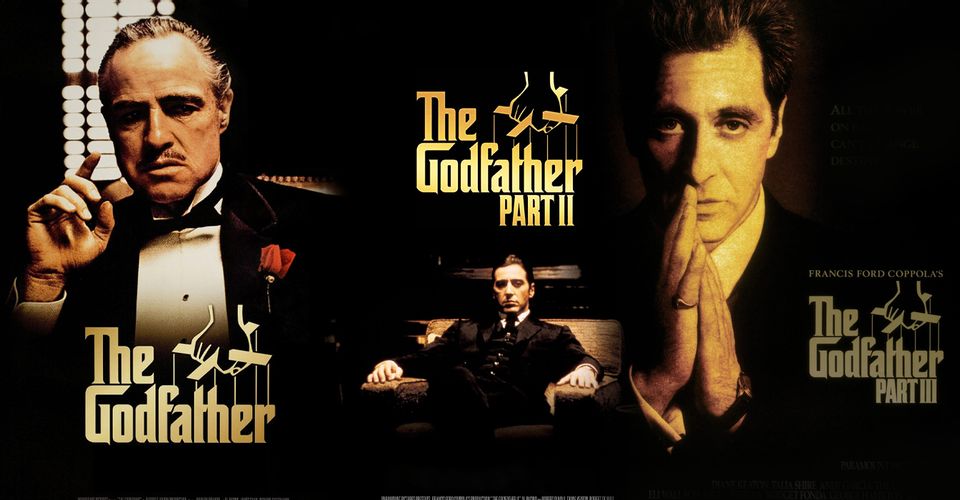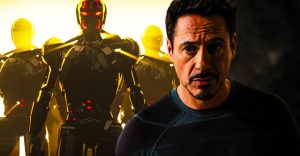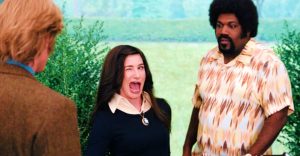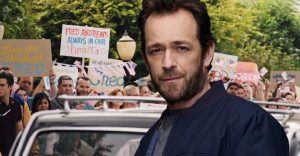Every Godfather Movie Ranked From Worst To Best

How does every Godfather movie rank from worst to best? Based on Mario Puzo’s bestselling crime novel, The Godfather, Francis Ford Coppola’s The Godfather trilogy has had an indelible mark on cinema, changing the way in which mob dramas are made and perceived.
Stellar performances and taut narrative storytelling aside, the seminal reason behind the trilogy’s success as a whole can be attributed to its underlying themes, mainly the madness, glory, and utter failure of the American Dream. An unforgettable manifesto on organized crime, The Godfather and The Godfather Part II, in particular, have been deemed prime representations of the gangster genre while being hailed as “a new mythology on crime.” The notion of masculinity within American culture also emerges as a prime motif in the movies, which is juxtaposed in the dynamic between Don Vito Corleone and Amerigo Bonasera, both being Italian immigrants, wherein the former is a symbol of authority and power, and the latter is powerless when faced with the inequalities within the American justice system.
In order to create a fair ranking of The Godfather movies, one needs to take Coppola’s newest cut of The Godfather III, namely The Godfather, Coda: The Death of Michael Corleone into consideration. Keeping this in mind, here’s every Godfather movie, ranked from worst to best.
4. The Godfather Part III

Considered the weakest link in the trilogy, The Godfather Part III was criticized due to a plethora of reasons, including the film’s inadequacy as a stand-alone narrative, its convoluted plot concerning the Immobiliare, and Sofia Coppola’s awkward performance as Mary Corleone. While these criticisms are valid, it is important to note that The Godfather Part III was originally intended by both Coppola and Puzo as an epilogue to the masterful saga, instead of a grand finale that succeeded its predecessors. Due to unavoidable circumstantial reasons, along with Universal’s insistence on framing the third installment as a conclusive piece, The Godfather III suffered greatly from a narrative standpoint, a flaw that was exacerbated by several unimpressive performances, and long-drawn-out introductory sequences that marred the pacing of the movie.
While Coppola’s new rendition, The Coda Cut, addresses some of these flaws, it is crucial to consider the merit of The Godfather III in its own right. Al Pacino’s performance as a lost, broken, and increasingly guilt-ridden Michael Corleone is laudable to say and the least, and it is interesting to witness the trajectory of the new Corleone head, Vincent Mancini (Andy Garcia), as he navigates the same trappings as those before him. There’s also the issue of the absence of Robert Duvall as Corleone consigliere Tom Hagen, which hampers the final installment considerably, and the strong critical dislike when it came to Sofia Coppola’s wooden performance as Mary. Although Sofia Coppola went on to become a masterful director in her own right, while not allowing harsh criticism of her role as Mary to get to her, it is also important to note that it must’ve been immensely difficult for her to assume last-minute responsibility on a project of such magnitude. Nonetheless, due to a mixture of these factors, and much more, The Godfather III ranks lowest in the trilogy, although it is undoubtedly worth a watch.
3. The Godfather, Coda: The Death of Michael Corleone

Coppola is no stranger to revisiting his creations over time, as exemplified in the multiple renditions of his Vietnam masterpiece, Apocalypse Now. The criticisms surrounding The Godfather Part III were finally addressed through the recent release of a new cut, named The Godfather, Coda: The Death of Michael Corleone, through which Coppola aims to mold the third installment more as a fitting epilogue to the saga, as opposed to a grand conclusion that the film was popularly expected to be. The Godfather Coda does not differ wildly from the original, although the changes made grant an entirely new layer to the film. This is especially true in the case of Michael’s journey, whose deeper motivations are spelled out more clearly in the Coda cut, tracing his arc as a man doomed to suffer the repercussions of his actions as mob boss over the years.
Coppola fixes the original’s meandering plot by editing it into a much shorter film, mainly via shuffling key scene sequences and altering the beginning and the end altogether. These creative decisions undoubtedly improve the narratorial integrity of the film, as it chooses to open with a strong opening featuring a key conversation between Michael and Archbishop Gilday. By positioning this exchange as the opening sequence, Coppola clarifies Michael’s stance as someone seeking legitimacy and redemption, two concepts that elude him right up till the end. Another crucial change in The Godfather III is the new cut’s ending, which ends instead with Michael’s anguished scream when he finds that his only source of comfort and hope, his daughter Mary, has been shot dead as a result of the sins committed by him. Utterly broken and forever lost, Michael undergoes a more spiritual death instead of a literal one, which grants his story a more urgent tint, while greatly improving upon the core narrative thread that unifies the final installment.
2. The Godfather Part II

The successor to the genre-altering The Godfather was one that evoked nostalgia for a lost era, heightened by the film’s moody, atmospheric tint and mournful musical score. The Godfather Part II excels on various fronts, especially from a narrative standpoint, as the film chronicles the Corleone regime, built on murder, extortion, and ruthless will with startling emotional depth. The Godfather Part II flashes back to Don Vito’s story, which is an interesting look into the past that shaped him into the man he transformed into later on, and then moves on to Michael losing the remaining shreds of his morality, as he has embarked upon a journey that can never warrant him peace.
A strange duality pervades the film, urging audiences to critically evaluate the actions of the men center place within the saga, while also witnessing them slowly descend into empty shells of who they were. This gives up to a powerful sense of catharsis with the purging of pity and fear, especially when Michael’s journey is contrasted with that of his father, wherein the latter’s existence is still steeped in suffering despite the upholding of certain values that made Don Corleone the man he was. The sheer brilliance of The Godfather III culminates in a now-iconic sequence, in which Michael’s grants Fredo the kiss of death on learning about his act of betrayal – a scene that feels especially heavy in retrospect.
1. The Godfather

The Godfather brought Mario Puzo’s vision to life, chronicling a tale entrenched in diasporic politics and emotional quandaries, which is a seminal reason why audiences were able to empathize with the characters despite being acutely aware of their morally dubious acts. Apart from exemplifying the legacy of the Corleone clan, established through characters like Don Vito, Tom Hagen, and Sonny, The Godfather marks the inception of Michael’s metamorphosis, who resembles his father in more ways than one.
However, with time, an an-almost cruel ruthlessness embodies Michael, which can be attributed to his plurality of vision when it comes to reconciling two distinct cultures – the American way and his own Italian traditions. This culminates after the death of Apollonia, after which Michael comes to internalize the Mafia ethos, which included the concepts of justified vendetta, honor, and omertà (law of silence). Michael’s transition from “That’s my family, Kay. Not me” to him killing Sallazzo and McClusky in cold blood in the diner scene is almost horrifying to behold, through who he assumes great power to the point of alienating those who love him. Dripping with grandeur, tragedy, doomed romances, and high-stakes drama, The Godfather remains unparalleled within The Godfather saga, granting it with the much-deserved status of critical-acclaim.
About The Author


















